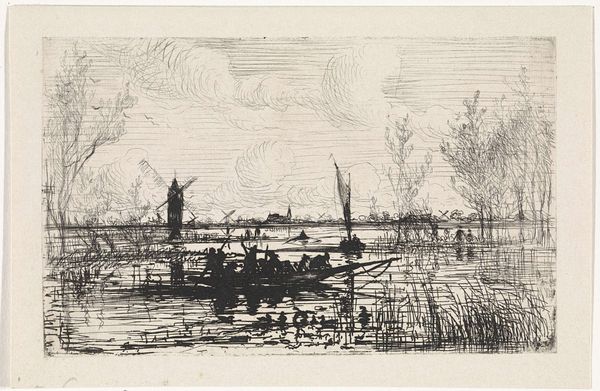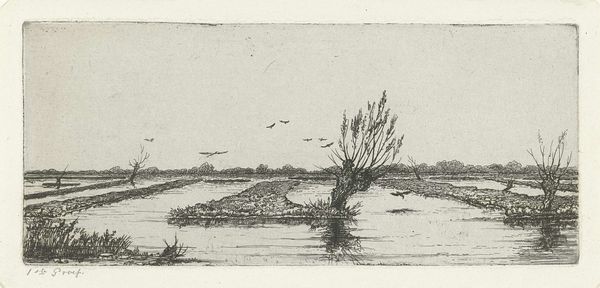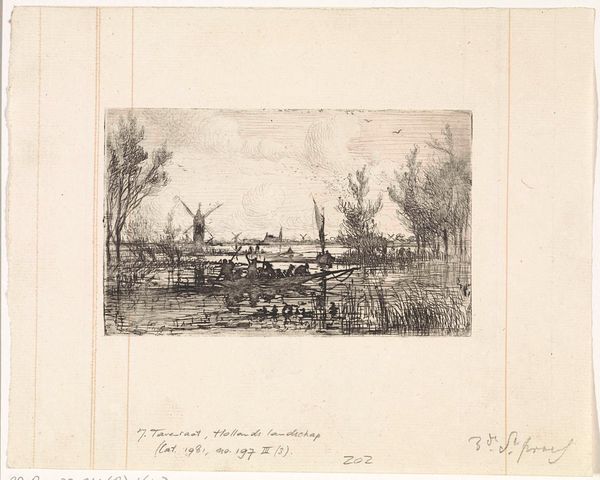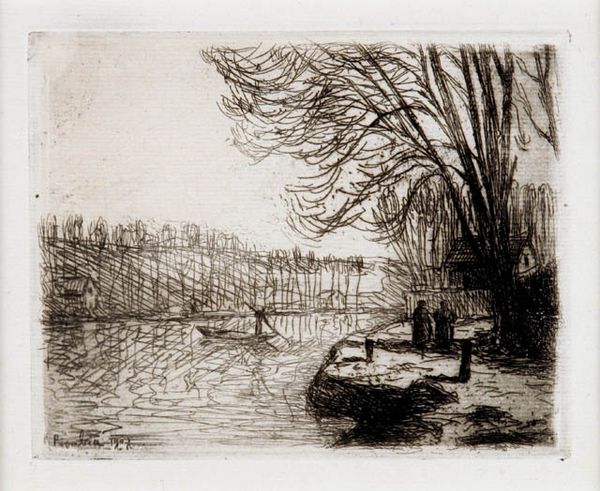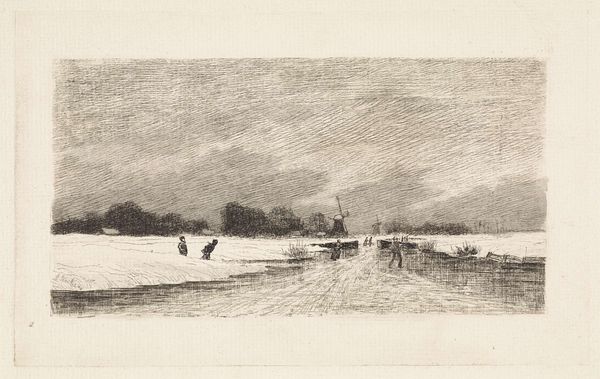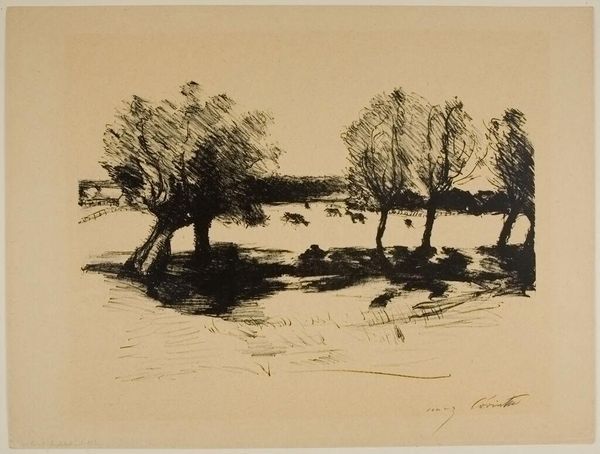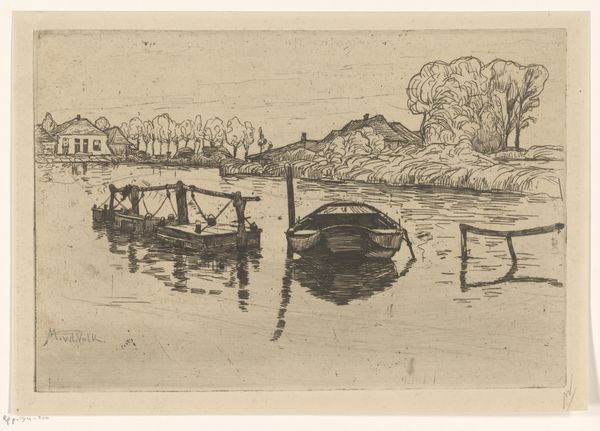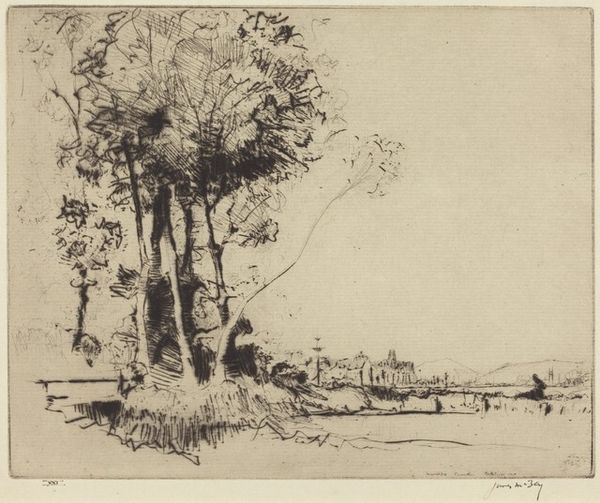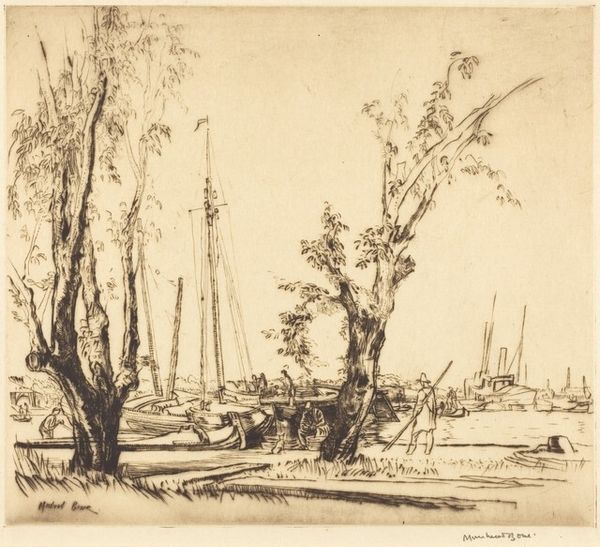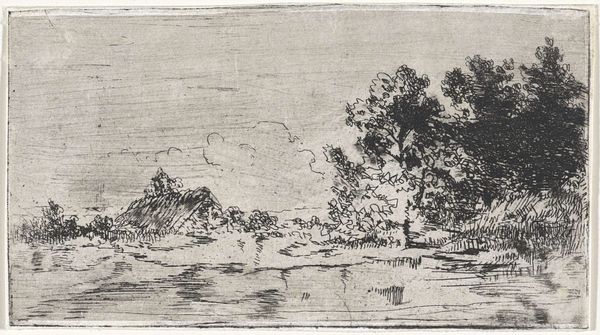
print, etching, ink
#
dutch-golden-age
# print
#
etching
#
landscape
#
etching
#
ink
#
geometric
Dimensions: height 81 mm, width 130 mm
Copyright: Rijks Museum: Open Domain
Curator: Welcome. We’re here to explore Johannes Tavenraat’s "Hollands landschap," created sometime between 1819 and 1881. It’s a captivating etching rendered in ink. What impressions does it give you? Editor: It feels… nostalgic, perhaps a touch melancholic. The limited palette and delicate lines create a sense of distance, as if we are looking at a memory. Curator: Precisely. Observe how Tavenraat uses the etching technique to establish tonal variations, generating depth. The density of line dictates spatial recession – note how forms grow progressively indistinct towards the horizon. The geometric windmills in the background offer vertical repetition and visual balance. Editor: The windmills definitely act as powerful symbols, of course. They signify Dutch ingenuity, land reclamation, but also the relentless passage of time and our attempts to harness the natural world. Water has rich connotations here too. It evokes transience and fluidity. The boats, laden with figures, create an explicit image of transportation and transition, perhaps even suggesting trade. Curator: Indeed. The structural rhythm established through these repeated shapes guides the eye across the composition. Tavenraat seems to understand implicitly the communicative potential of visual architecture, as evidenced through the careful manipulation of form and space. Editor: It’s hard not to think about Dutch identity too. This scene, however unassuming, showcases essential cultural icons like waterways and those ever-present windmills. There's almost a suggestion that the citizens are journeying toward progress, and innovation. Curator: It’s this fusion of formal arrangement and representative elements that provides its richness. This careful formal arrangement amplifies meaning. Observe the contrast between the darker foreground with detailed reeds and reflective water, contrasted against the distant windmills; how is it composed geometrically? Editor: From an iconographic standpoint, this work feels so firmly anchored to the themes of change and movement—both geographically with travel across waterways and philosophically, thinking of time’s unyielding flow, always onward. The figures in the boats may serve as an assertion of national character and endeavor too, a celebration of collective aspiration. Curator: Ultimately, what Tavenraat accomplishes with this print—the sheer balance achieved across multiple axes and forms—serves as evidence of the communicative possibilities inherent in art making. Editor: Indeed. Viewing this work really pulls us back, connecting with imagery passed through history. It urges reflection on not only Holland, but humanity as well.
Comments
No comments
Be the first to comment and join the conversation on the ultimate creative platform.
